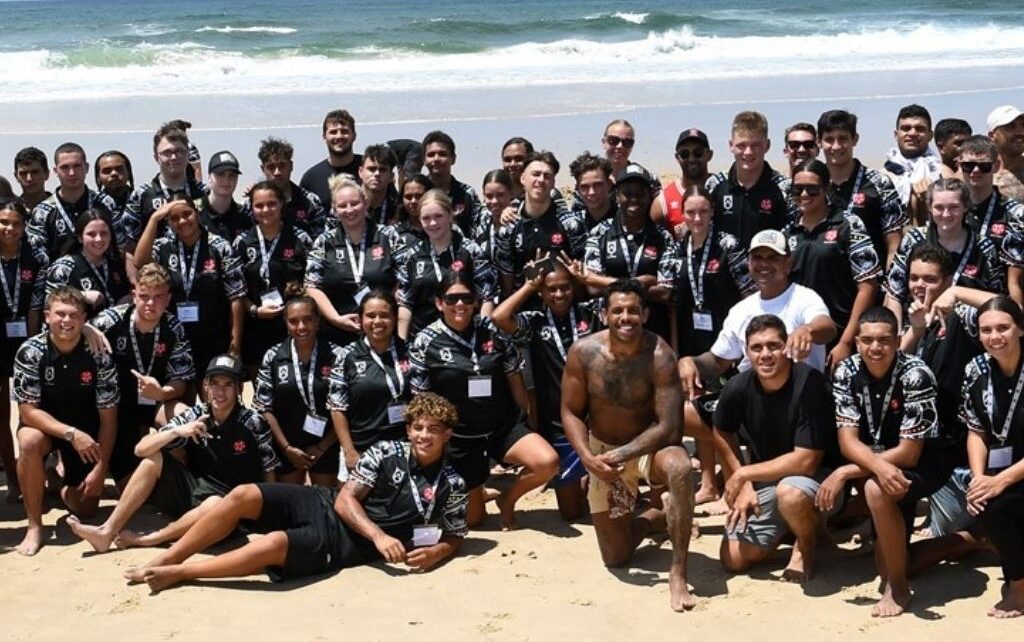Context: In 2020, Australia had a low unemployment rate of 6.80 per cent. However, its youth unemployment rate was twice that of the overall population at 15.6 per cent; this was a 0.1 percentage point increase in seasonally adjusted terms over the preceding year. Youth unemployment and underemployment has, in fact, been rising and young people have been increasingly finding it difficult to find work. The key issue being that they have to compete with and be compared to more skilled workers for employment.
Implementation of programme/ initiative: The National Rugby League School to Work (S2W) Programme is an education and employment programme that utilizes the positive profile of the Rugby League to support and encourage young Indigenous Australians to complete their schooling and successfully transition into further education or employment. The programme provides young Indigenous Australians with work experience, mentoring and leadership opportunities that lead to successful outcomes. The programme is funded by the Australian Government, the Department of the Prime Minister and Cabinet, as well as National Rugby League Clubs and has been operational since 2012. The programme is offered to Year 11 and 12 students from participating schools to conduct one-on-one profiling sessions with their Project Officers and develop Career Development Plans, as well as participate in work experience and job-readiness training with club sponsors, partner organizations and other government and corporate supporters of the programme. To ensure a smooth transition, the programme continues mentorship for up to 12 months post schooling, with close monitoring of participant’s progress.
Main challenges: The National Rugby League S2W Programme was developed after research highlighted that indigenous youth who had not found employment or training pathways six months after leaving school, had significantly higher chances of long-term unemployment. To address the Australian Government’s key ‘Closing the Gap’ targets for indigenous students in Western Sydney, and to halve the gap in employment outcomes, this programme aims to bridge the divide between Indigenous and non-Indigenous Australians within the decade.
Results achieved: More than 2,000 participants, ranging from Year 11 and 12, have taken part in the programme, with more than 90 per cent graduating to employment and further education since its development. After the students graduate, the programme connects the students to sustainable jobs through its established strong partnerships, with over 100 businesses and institutions. The programme has successfully expanded its development, by adding 200 more schools in 2020, and 1,000 of its students receiving access to work experience opportunities, industry visits and workshops across Queensland, New South Wales, Australian Capital Territory and Victoria.
Moving Forward: Moving forward, the National Rugby League S2W Programme aims to establish more partnerships and clubs with both indigenous and non-indigenous schools to bridge the gap even further, as well as expand its programme locations to broader Australia. The programme was recently extended for a further three years until 2023 and is set to enter its tenth year with the continual support of the Australian Government. It hopes to run for further years with the ongoing support of its partners.
Replicability: National Rugby League S2W Programme is exemplary of how sport can play an active role in sustainable social change, and related social indicators include those on education, employment and health. The programme is making a real difference to the lives of young indigenous students, their families and their communities, and highlighting their importance in society; this attention to youth and valuing their contribution is a useful lesson that should be considered by other initiatives. In sum, the programme provides a clear employment pathway for thousands of students and it is making a positive impact across the broader community.
Acknowledgement:
This good practice was kindly prepared by Ms. Alysha Brahmantiara Putri.
References:
https://www.nrl.com/community/school-to-work/about/
Project Details
Date: January 14, 2021
